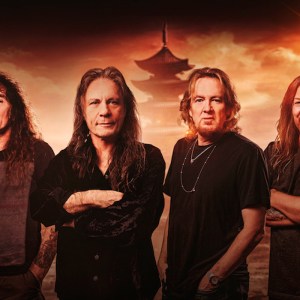You know the songs. You know the videos. You know the beards.
Videos by American Songwriter
Just on the basis of their music, ZZ Top is a fascinating band. However, they are even more interesting than many fans know. The boogie-rock band from Texas has a special place in rock and roll history, and the following five facts about the trio highlight what an unusual and compelling career they’ve had.
1. The classic lineup of Billy Gibbons, Dusty Hill, and Frank Beard had historic staying power.
The version of ZZ Top that featured Billy Gibbons on guitar, Dusty Hill on bass and keyboards, and Frank Beard on drums came together in late 1969, and this was the band’s lineup continuously until Hill’s passing in 2021. That span of nearly 52 years is the longest stretch for any band in popular music to have the same lineup. The band continues to tour, with former guitar tech Elwood Francis replacing Hill on bass.
2. Two members of ZZ Top toured as part of a fake version of The Zombies.
In 1969, shortly before joining ZZ Top, Hill and Beard were in one of two bands passing themselves off as the British psychedelic pop band The Zombies. The real Zombies had broken up in 1967 after recording their now-classic album, Odessey and Oracle. The album, and its eventual hit single, “Time of the Season,” took a while to gain popularity, and by the time there was demand for live performances in the U.S., the band had long ceased to exist. Enter Hill and Beard, who along with Mark Ramsey and Sebastian Meador, briefly toured as The Zombies, allowing Delta Promotions—which had booked tours for several other fraudulent acts—to take advantage of the real band’s sudden popularity.
3. Hill worked at DFW Airport—after ZZ Top achieved commercial success.
Plenty of professional musicians have side gigs, but this situation was a little different. ZZ Top had already released three gold albums—Tres Hombres, Fandango! and Tejas—by the time Hill started working at Dallas’ airport. The band was on hiatus while Beard was getting treatment for drug addiction, and Hill saw it as an opportunity to do something besides music. Once the band came back together to record Degüello, however, Hill’s time of being an airport worker was in the rear-view mirror.
[RELATED: Behind the Lusty ZZ Top Song “Legs”]
4. Gibbons got an idea for an effect from watching Phil Donahue.
Why do the vocals sound so strange on “Manic Mechanic?” For this Degüello track, the band employed a pitch shifter that Gibbons learned about after watching an episode of The Phil Donahue Show. There was a segment that featured a guest who was protecting his identity by having the sound of his voice changed. Gibbons was intrigued and had Terry Manning, who was the engineer for Degüello, call the show to find out how they altered the guest’s voice. Upon learning which device the show used, he purchased it, and the low-pitched vocals on “Manic Mechanic” were the result.
5. A former radio DJ shaped the sound that made Eliminator an enormous hit.
Linden Hudson, a former DJ who served as a pre-production engineer on the band’s 1983 mega-smash, Eliminator, was an uncredited songwriter on several of the album’s tracks, contributed synthesizer effects, and programmed the drum machine. (In 1986, Hudson was awarded $600,000 in damages for not being credited as the sole writer for the song “Thug.”) Hudson was also responsible for the album’s faster, more danceable tempo, as he suggested that the band record their songs at or near 124 beats per minute (bpm)—a tempo that, he observed, a lot of hit songs had in common.
And a Bonus ZZ Top Fact You May Not Know!
The band’s turn to a more electronic sound in the 1980s was inspired in large part by Gibbons’ enthusiasm for the music of Orchestral Maneuvers in the Dark and Depeche Mode.
Photo: Ross Halfin / BMG Press Release
